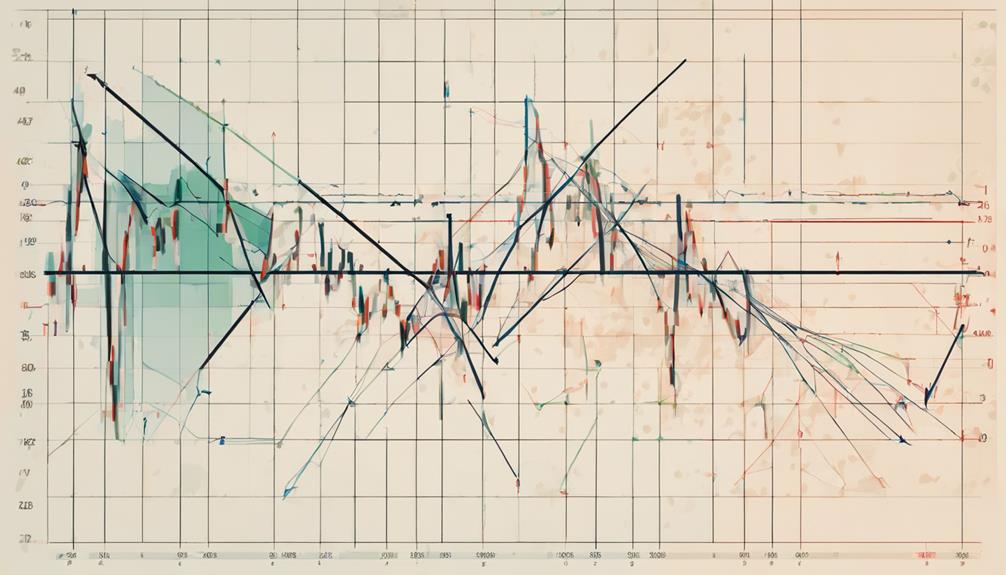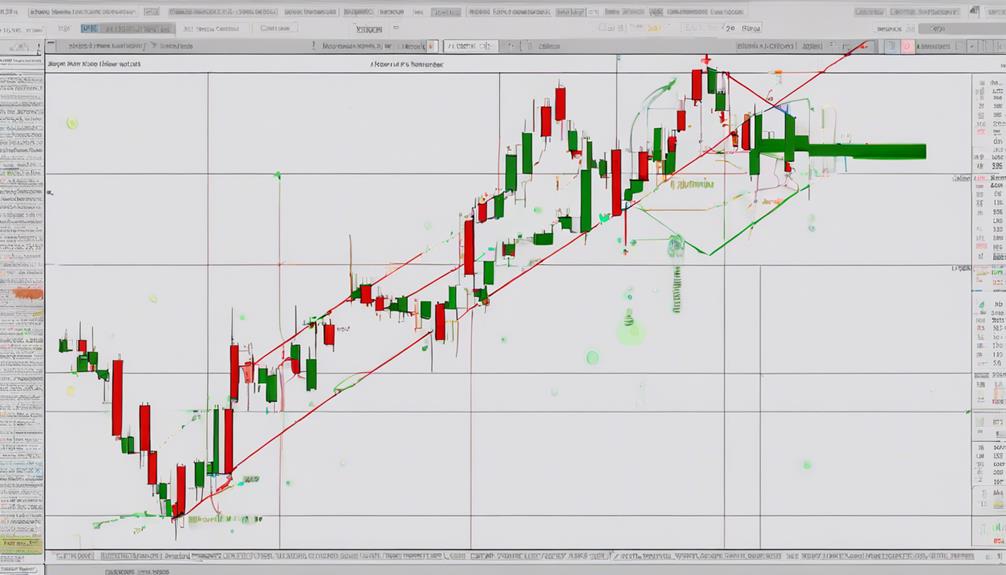In the dynamic world of trading, integrating Gann Theory into your strategy can provide a valuable edge. Understanding the principles of market geometry, time cycles, and price movement can offer a structured approach to decision-making.
By exploring how Gann Theory intersects with technical analysis tools, such as Fibonacci retracements or Elliott Wave theory, traders can uncover hidden patterns and potential turning points. This fusion of methodologies might just be the missing piece for traders seeking to elevate their performance and gain a deeper insight into market behavior.
Key Concepts of Gann Theory
Gann Theory, a comprehensive approach to market analysis, encompasses key concepts that revolve around the fundamental pillars of time, price, and volume. Within Gann Theory, Gann Angles play a crucial role in predicting future price movements. These angles, such as the 1×1 and 2×1, are used to forecast potential support and resistance levels in the market.
Additionally, time and price squaring, a technique known as Gann Square, is employed to identify significant market turning points based on geometric relationships. Trend lines are frequently utilized in Gann Theory to visualize the direction of price movements and determine potential entry and exit points for trades.
Gann Numbers and Gann Time Cycles are also integral components of this theory, aiding traders in understanding the cyclical nature of markets and pinpointing key timeframes for potential market reversals. By incorporating these key concepts into Gann trading strategies, traders can enhance their analytical abilities and make more informed trading decisions based on data-driven insights.
Practical Application of Gann Theory

Utilizing Gann Theory in practical trading scenarios requires a systematic integration of key principles and technical tools to enhance market analysis and decision-making processes. When applying Gann Theory, traders should consider the following:
- Drawing Gann Angles: Utilize Gann Angles on price charts to identify crucial support and resistance levels.
- Incorporating Technical Analysis Tools: Combine Gann Theory with tools like trend lines and moving averages for a more comprehensive market analysis.
- Emphasizing Time Cycles: Gann Theory places importance on time cycles to accurately predict future market movements.
- Implementing Risk Management Strategies: Safeguard capital by setting stop-loss orders at Gann Theory support/resistance levels.
Furthermore, traders can enhance their understanding and proficiency in Gann Theory through activities like backtesting and utilizing demo accounts. These practices not only improve trading success but also aid in mastering the intricacies of Gann Theory for more informed decision-making.
Gann Angles in Market Analysis

In market analysis, the application of Gann Angles offers traders a structured method for predicting future price movements and identifying critical support and resistance levels. Gann Angles, such as the 1×1 and 2×1 angles, are instrumental in determining key levels on price charts. Traders utilize these angles to set up stop-loss orders and pinpoint entry/exit points effectively.
By combining Gann Angles with trendlines, traders can confirm significant support and resistance levels, enhancing the accuracy of their analysis. Moreover, employing Gann Angles across multiple time frames provides a comprehensive view of market trends, enabling traders to make informed decisions. This approach allows traders to anticipate future price movements more confidently.
Strategies for Gann Theory Integration

When incorporating Gann Theory into trading strategies, the identification of key support and resistance levels serves as a foundational element for effective market analysis and decision-making. Utilizing Gann Angles alongside trend lines and moving averages can provide confirmation for entry/exit points and trend changes.
Different types of traders apply Gann Theory in varying ways: day traders use Gann Angles for intraday support/resistance levels, swing traders utilize it for detecting trend shifts, and position traders rely on Gann Angles for establishing long-term support/resistance levels in their trading strategies.
Implementing risk management techniques with Gann Theory involves strategically placing stop-loss orders at identified support/resistance levels to mitigate potential losses. By integrating these elements into their trading strategies, traders can enhance their decision-making processes and improve overall performance in the market.
Maximizing Trading Success With Gann

Maximizing trading success with Gann Theory involves strategically integrating key support and resistance levels to enhance risk management and decision-making processes. By utilizing Gann Theory's concepts such as Gann Angles, Price Time, and Time Cycles, traders can effectively identify crucial support and resistance levels that signify potential trend reversals or continuations. Integrating these levels with trend lines and moving averages can further validate entry and exit points, improving the overall accuracy of trade decisions. Additionally, conducting time cycle analysis based on Gann Theory enables traders to anticipate future market movements, aiding in strategic planning and trade execution.
Furthermore, setting stop-loss orders at Gann Theory levels can help mitigate risks during unexpected market fluctuations, safeguarding capital and minimizing potential losses. Consistent practice and backtesting of trading strategies with Gann Theory can refine one's approach, leading to increased success rates and better adaptation to changing market conditions. By incorporating Gann Theory into trading practices, traders can navigate market dynamics with a more structured and informed approach, enhancing their overall trading performance through technical analysis and strategic decision-making.
How Can I Successfully Integrate Gann Theory Into My Trading Strategy?
Integrating successful Gann theory trading tips into your strategy requires a deep understanding of Gann’s principles. Start by studying Gann’s techniques and applying them to your analysis. Use time and price squaring, Gann angles, and support/resistance levels to make informed trading decisions. Keep practicing and refining your approach.
Frequently Asked Questions
What Is Gann Strategy in Trading?
Gann strategy in trading involves applying W.D. Gann's geometric principles to predict market movements by utilizing Gann angles on price charts. Traders use tools like Gann Fans and Gann Squares to identify support, resistance, and trend directions for informed decision-making.
What Is the 9 5 Gann Rule?
The 9-5 Gann Rule mandates trading solely during standard market hours, 9:30 am to 4:00 pm. This principle, rooted in Gann Theory, emphasizes consistency and reliability in market movements and price action, aligning with traditional investor practices.
How Effective Is Gann Theory?
Gann Theory offers traders a potentially effective tool for forecasting price movements with claimed accuracy rates up to 90%. By leveraging geometric shapes, Gann Angles, and time analysis, traders can enhance risk management and market prediction strategies.
How Do You Use Gann Square in Trading View?
Gann Square in Trading View acts as a geometric compass, guiding traders to forecast price and time targets with precision. By utilizing its tools, traders can identify potential reversal points, set profit targets, and visualize price movements effectively.
Conclusion
In conclusion, integrating Gann Theory into your trading strategy can provide valuable insights and tools for enhancing your trading success.
By combining key concepts of Gann Theory with practical applications and strategies, traders can maximize their potential for profitable trades.
Utilizing Gann angles, time analysis, and risk management techniques can help in predicting market movements and protecting capital.
Through practice, backtesting, and refinement, traders can improve their trading strategy and increase their chances of success in the market.
